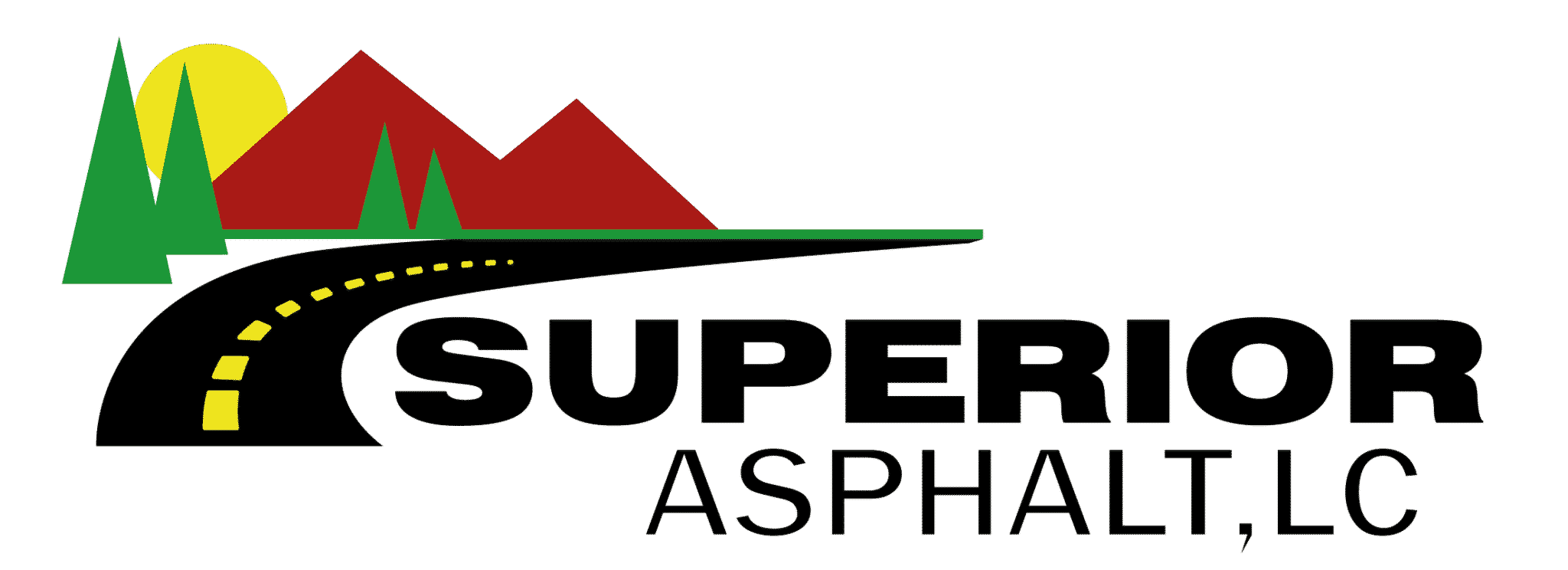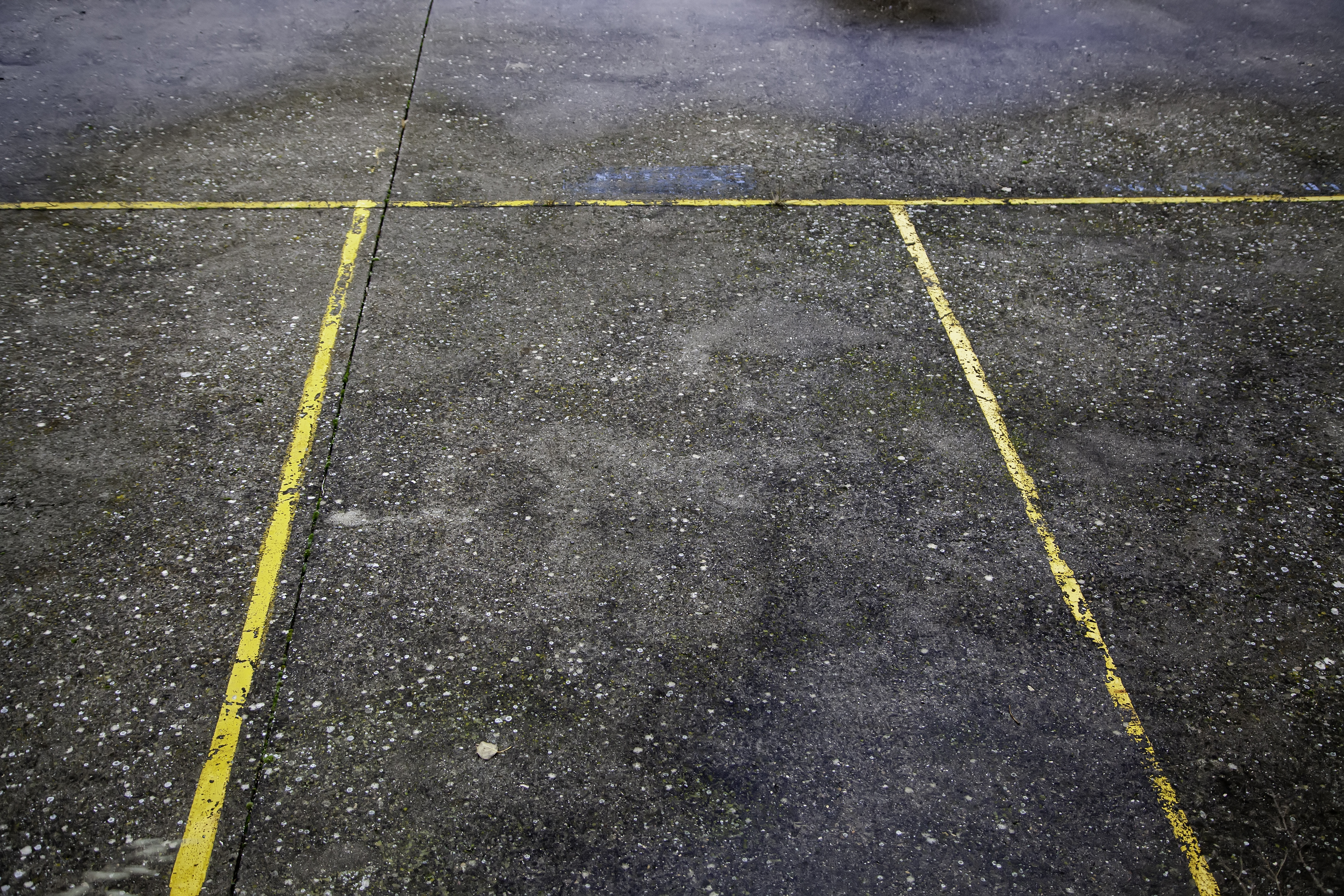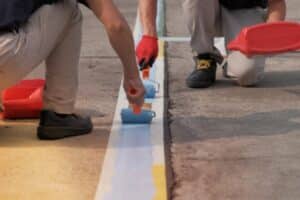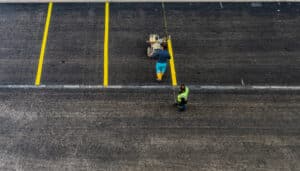Asphalt striping is more than adding paint lines and markings to guide drivers and pedestrians in parking lots. Property owners must follow specific ADA requirements to ensure their parking lots comply with local safety and regulations. However, parking lot striping mistakes can often occur. From crooked lines to incorrect placements, these mistakes can lead to costly accidents and legal liabilities.
Below are some common parking lot striping mistakes to avoid and why you should hire experienced parking lot striping professionals for maintenance instead.
5 Parking Lot Striping Mistakes You Must Avoid
From non-compliance that can result in fines and accidents to extended parking lot closures from painting parking lots again, here are five asphalt striping mistakes to avoid.
Mistake #1: DIY Parking Lot Restriping
Every property owner with a parking lot knows that restriping is eventually needed. However, many don’t know how to stripe a parking lot do-it-yourself accurately. Property owners and managers with parking lots tend to think DIY parking lot striping is more cost-effective, but it could cost more in the long run if done incorrectly.
Parking lot restriping is more than painting over existing lines that are fading. The asphalt must be thoroughly cleaned, pressure washed, and, often recommended, sealcoated before painting lines in a parking lot.
The solution to this common mistake is to restripe parking lot lines every one to three years (depending on the traffic volume and weight) with asphalt striping professionals.
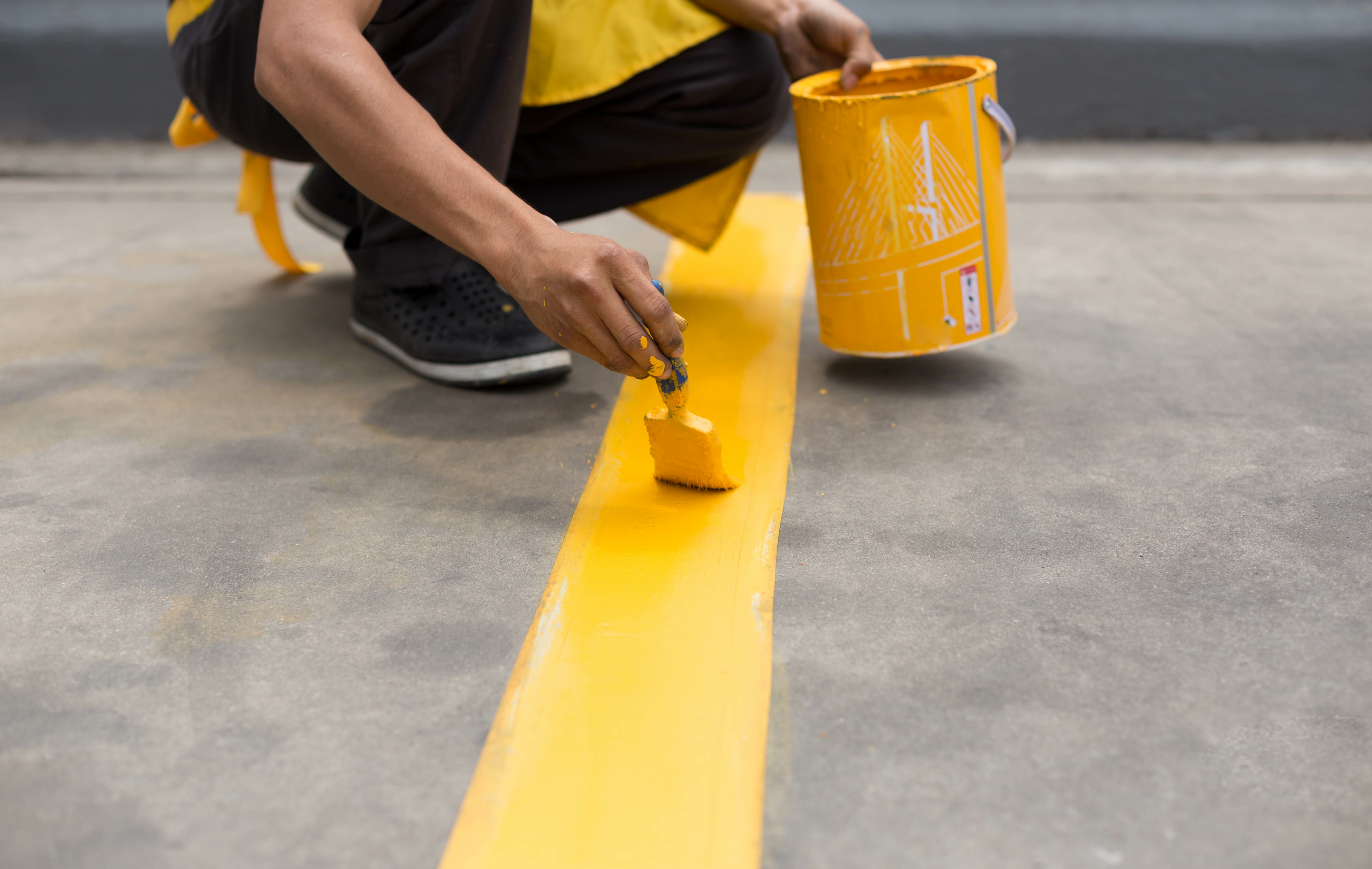
Mistake #2: Incorrect Parking Lot Striping Paint
Next on our list of parking lot striping mistakes in parking lots are property owners who use the wrong parking lot striping paint. Although most parking lot paints are water and oil-based, there are other types to enhance markings and stripes.
For example, reflective paint is coated on top of standard parking lot paint for easier nighttime navigation. Thermoplastic paint is designed for longer-lasting performance, which is crucial for parking lots with high traffic volume and weight. If your lot has heavy tractor-trailers consistently, it’s recommended to use high-performance parking lot paint to prolong the paint’s lifespan.
Property owners who DIY their parking lot striping risk vehicle and pedestrian safety with mistakes like incorrect parking lot paint. Asphalt professionals know how to paint parking lot lines with high-quality pavement treatments, paints, and equipment to get the best results possible.
Mistake #3: Not Meeting Parking Lot Compliance Standards
One of the biggest parking lot striping mistakes property owners make is failing to meet parking lot compliance standards. Parking lines in a parking lot must adhere to ADA guidelines, fire code laws, and city and state codes.
Below we’ll break down common parking striping mistakes that property owners risk with each type of parking lot compliance.
Mistakes to Avoid in ADA Guidelines for Parking Lots
The ADA (Americans with Disabilities Act) requires special accommodations in parking lots, such as accessible areas, minimum designated accessible parking spots, and more. If property owners don’t follow ADA guidelines for parking lots, they risk the safety of people with disabilities, liability, and government sanctions.
Some ADA standards for asphalt striping include:
- Minimum line width of 4 inches
- The international accessibility symbol must be painted in the center of each parking space
- The international accessibility symbol must be painted blue and white
- All markings must be visible, legible, and durable
If your parking lot lines don’t meet ADA regulations, property owners can face longer parking lot closure times to have it re-done.
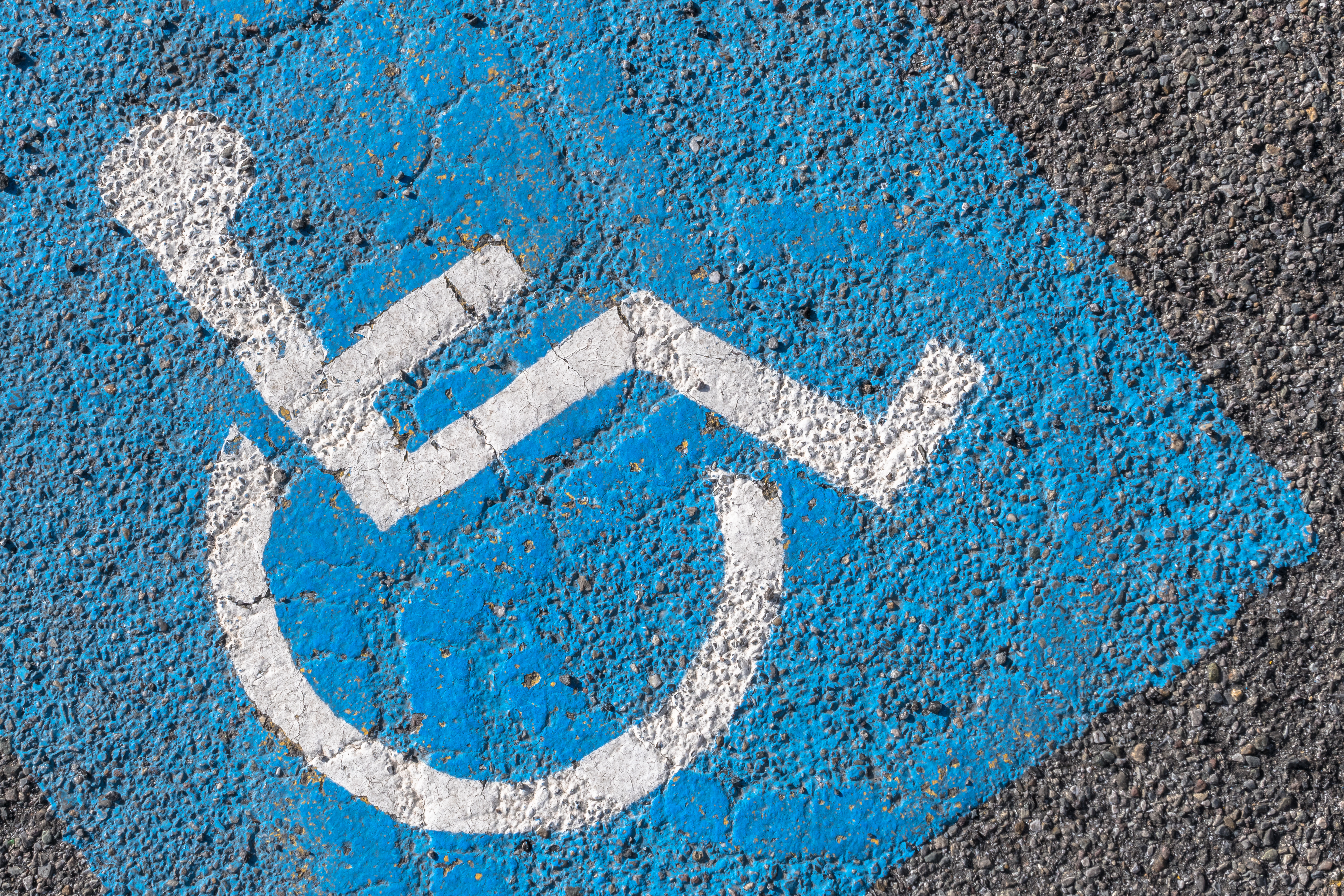
Mistakes to Avoid in Fire Code Laws for Parking Lots
Parking lot owners know that fire officials need designated fire lanes to access their property in an emergency. However, if it doesn’t follow specific fire code laws for parking lots that the National Fire Protection Association (NFPA) sets, it can create serious safety issues for pedestrians, vehicles, and emergency responders.
Some NFPA fire codes for asphalt striping include:
- Fire lanes and areas in with large letters
- Routine parking lot restriping to ensure legibility
- Minimum line width requirements depending on municipal and state laws
Whether it’s a new or existing parking lot, property owners must adhere to their area and national fire code laws to ensure compliance.
Mistakes to Avoid in City and State Parking Lot Codes
The last parking lot compliance standards that property owners must follow are their municipal city and state codes. In addition to national guidelines, local governments have specific parking lot regulations that can differ based on location. For example, some local towns and states have varying asphalt striping width requirements than others. For this reason, business owners with parking lots must know their area’s parking striping standards or risk safety issues and fines.
Mistake #4: Not Sealcoating a Parking Lot Before Striping
Another common mistake property owners make with parking striping is not sealcoating their lot before striping or restriping it. When striping a parking lot, we highly suggest sealcoating and striping it all at once.
Parking lot sealcoating and striping go hand-in-hand because asphalt ages from wear and tear over time. Old asphalt chips, fades in color, and crumbles, making it a difficult canvas for painting parking lot lines. Without a dark asphalt color contrast or even pavement surface, parking lot paint can become washed out, hard to see, or uneven. Asphalt sealcoating and striping together ensure that your parking lot is closed for as little as possible with this type of preventative maintenance.
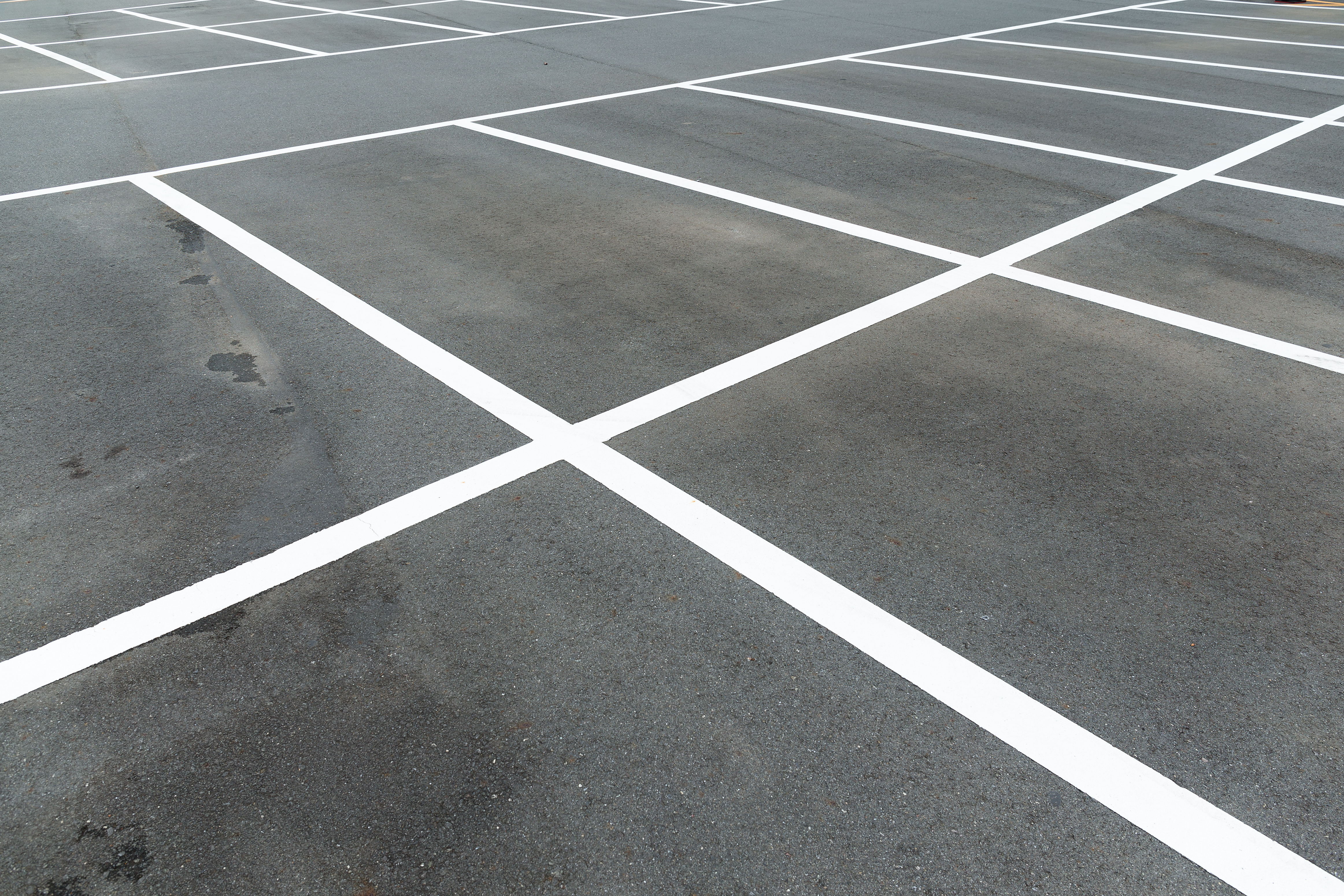
Mistake #5: Not Hiring Parking Lot Striping Professionals
Last on our list of parking lot striping mistakes to avoid is not hiring asphalt professionals. Asphalt professionals know how to stripe a parking lot to ensure compliance and preserve the paint’s lifespan.
Additionally, if you’re unsatisfied with the current parking lot layout design, asphalt professionals can optimize the structure.
Asphalt professionals can optimize your parking lot striping by:
- Improving traffic flow — changing parking spot sizes, adding one-way aisles, creating more parking spaces
- Changing parking space configuration — perpendicular parking spots for lots with many rows, angled parking spaces with lots less than 30 spaces, parallel parking spaces
- Adding designated loading zones — faster business deliveries, assigned areas for large trucks that don’t block traffic or other vehicles, added safety measures
By hiring professionals for parking lot striping, property owners can maximize the efficiency of their lot design and prevent safety hazards.
Contact Superior Asphalt for Professional Parking Lot Striping
Parking lot striping mistakes can seriously impact safety, compliance, and space efficiency. To prevent these issues, hiring experienced asphalt maintenance professionals well-versed in striping a parking lot within regulations and best practices is crucial. Properly striped parking lots not only provide clear guidance for drivers and pedestrians but also enhance the curbside appearance and functionality of the parking facility.
Whether you are a property owner, manager, or contractor, investing in quality parking lot striping services is essential for maintaining a safe and compliant lot.
Contact Superior Asphalt for asphalt parking lot striping today!
